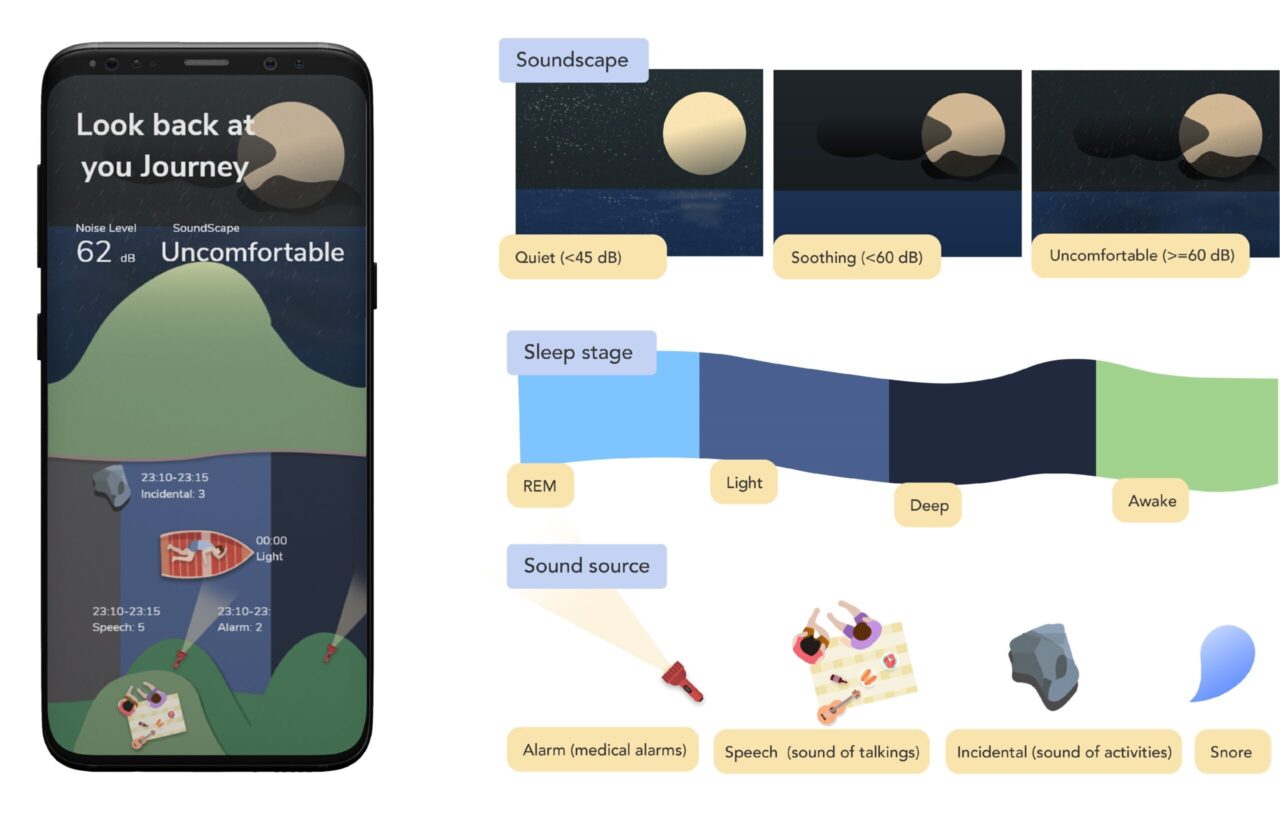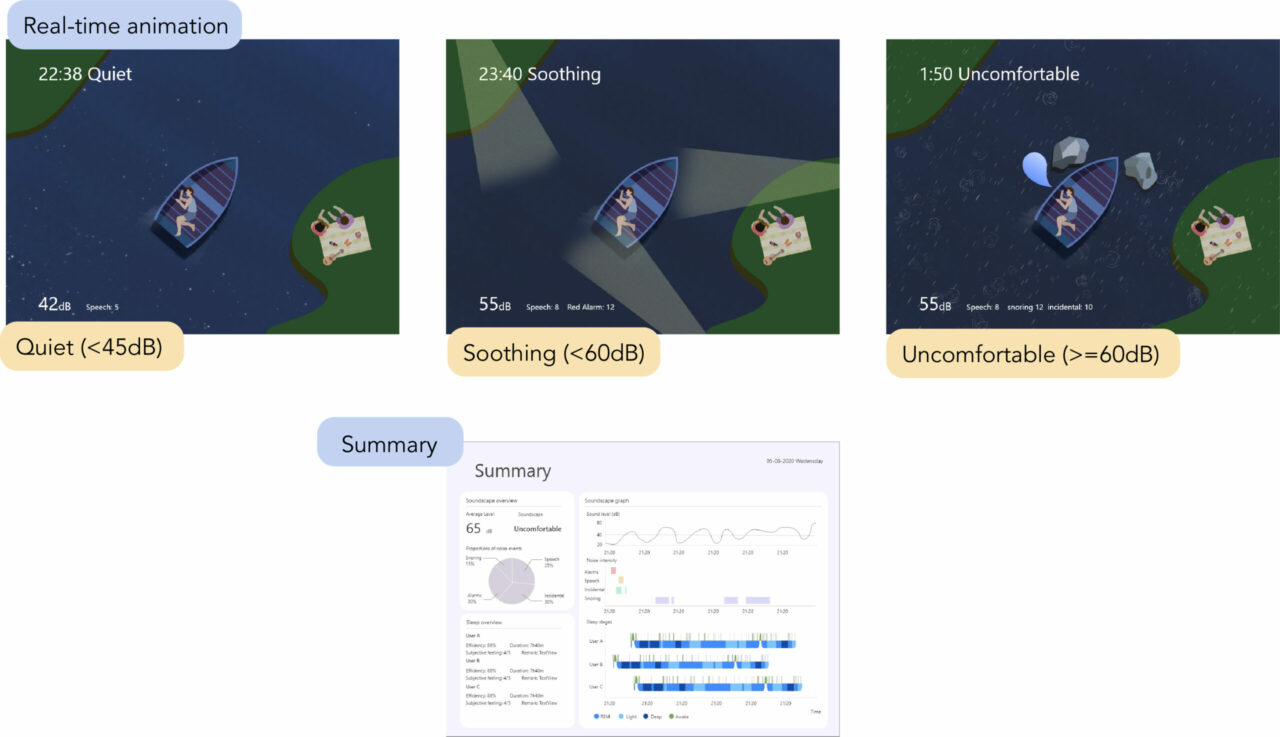Doplor Sleep
Mar 2020 - ongoing
Friendly feedback towards a better hospital soundscape for sleep
Doplor, the artful warning towards a quiet ICU, was a graduation project of Roel Redert. It aimed to create awareness of sound-producing events in the ICU by classifying and visualizing the soundscape in a pleasant way. The Doplor concept was further iterated and embodied by the student team Studio Reverb. The prototype was exhibited at various events and attracted the interest of Reinier de Graaf hospital.
Comparable to ICU, tackling sound issues in regular hospital wards are also vitally important. In the brain care unit of Reiner de Graaf hospital, sleep deprivation caused by environmental factors, such as sound, can put the patient in danger by causing delirium. Yiling Liu, a member of Studio Reverb, collaborating with Reinier de Graaf hospital and Critical alarms lab, turned Doplor into her graduation project to tackle the sound issues for sleeping in regular hospital wards.
Re-analyzing the soundscape led to new focus group
Through interviewing the nurses of the neurology department, it was found that different than ICU, patients in non-ICU have larger contributions to the sounds (e.g., talking on the phone, visiting, snoring, toilet sounds, etc. ). Therefore, patients have been involved as one pf the user groups. The sounds in the ward are classified as speech, incidental sounds, alarm, and snoring sounds.

Combine sleep data to increase awareness
Doplor sleep combines sleep data and sound data to generate insights and make users aware of how sounds are affecting sleep. By learning about how to assess sleep quality, the following parameters are included in data visualization: Sleep time and duration, change of sleep stages (REM, light, deep, and wake), and the duration of each sleep stage. It was a challenge to visualize not only sound data and sleep data, but also their relationship.
An internet-of-things solution
The final concept is an IoT solution which uses the microphone of patients’ smartphone as a sound captor. An application is built to process the sound data into decibels and different sound-generating events as previously classified based on sound frequencies. Fitbit was used to track the sleep of the patient and collect the sleep data needed. Similar to the original Doplor, real-time sound information is reported to the nurses as animation. The next day, a report combines sleep data and sound data to show their relationship is shown to nurses in the style of dashboard, and shown to the patients as interactive infographics.



Future design opportunities: quantified-self for personalized hospital care
The Doplor Sleep concept brought up some future design or research challenges: first, how to use quantified-self to help medical staff deliver personalized healthcare to each patient; second, how do we index the soundscape to evaluate how friendly it is for sleep. Besides, Reinier de Graaf hospital is looking for students to work on other environmental sleep-disturbing factors in the future.